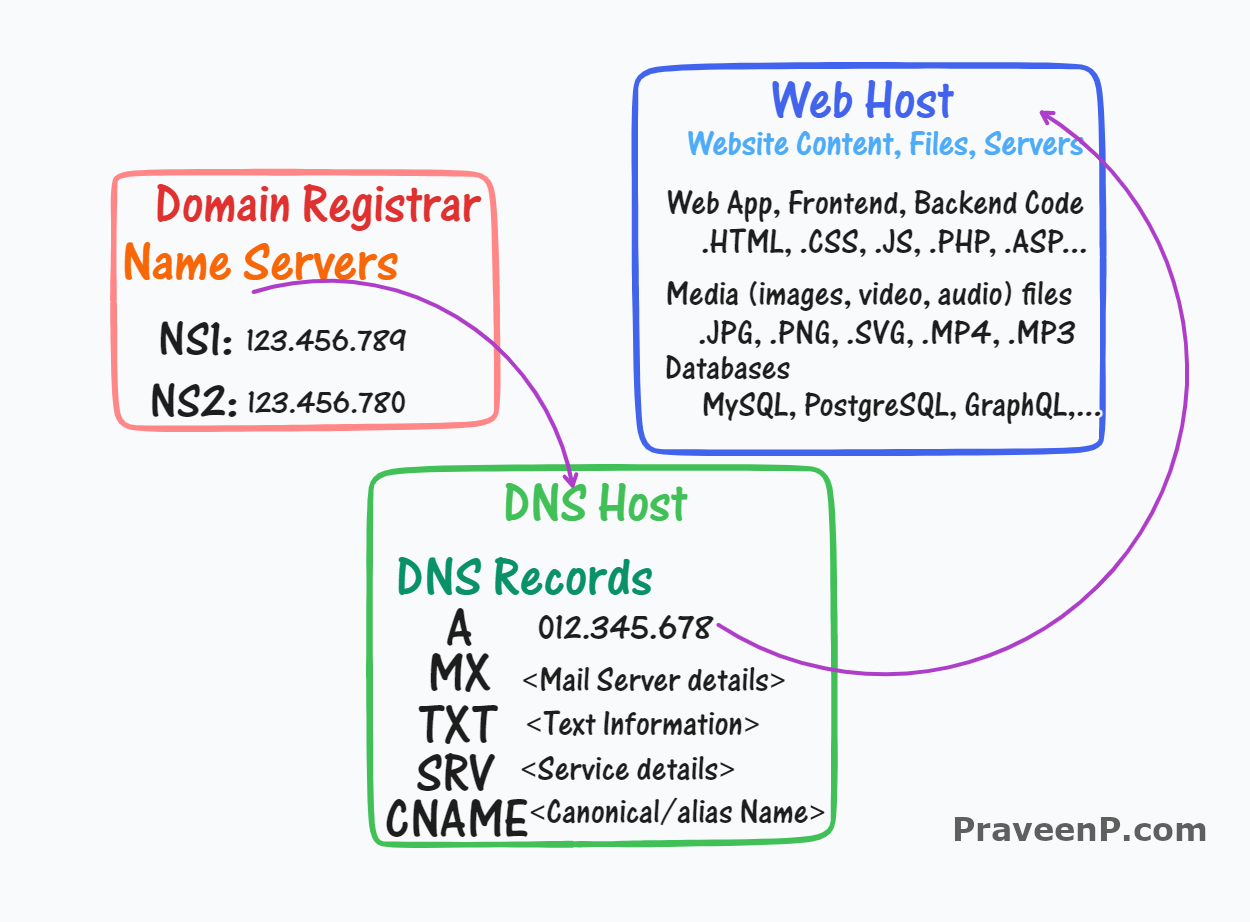

[Work-In-Progress]
From a user perspective,
Web 1.0 was the “read-only Web”: allowed read-only access to the data and applications.
Web 2.0 is the “participative social Web”: allows read, write, and partial execute access to the data and applications.
Web 3.0 is and will be the “ownership Web”: enables ownership in addition to allowing read, write, and, full execute access to the data and applications.
In Web 1.0 and Web 2.0, platforms were centralized and proprietary. With Web 3.0, platforms aim to be decentralized, distributed and open.
| Web 1.0 | Web 2.0 | Web3.0 | |
|---|---|---|---|
| User Roles | Content Consumers | Content Producers | Content Owners |
| User Permissions | Read | Read + Write + ~Execute | Read + Write + Execute + Own |
In Web 1.0, the users were consumers of text, images, videos and other content on websites.
With Web 2.0, the users became producers of text, images, videos and other content on platforms such as Facebook, Twitter, YouTube, Instagram, and TikTok. These centralized platforms own the content and control the distribution of the content. The platforms are free to use, but the users are the product as the platforms sell the users’ data to advertisers for revenue generation. The revenue and profits generated are captured by the platform shareholders, and those who contribute content (Creators) or help with distributions (Influencers) are paid a small fraction of the revenue generated by the platforms. The users have no ownership in the platforms.
With Web 3.0, the users become owners of text, images, videos, Decentralized Applications (DApps), Decentralized Autonomous Organizations (DAOs) other content on IPFS/blockchain-based platforms such as Ethereum, FileCoin, Arweave, and Storj. The platforms are decentralized and distributed, and the users own the content and the distribution of the content. The platforms are free to use, and the users can own and influence the platforms through tokens, staking and governance.

| Web 2.0 | Domain Registrar | DNS Host | Web Host |
|---|---|---|---|
| Purpose | Registers domain names and manages their ownership | Manages the domain name system (DNS) records for a domain | Hosts websites and provides storage and connectivity for them |
| Examples | GoDaddy, Namecheap, Network Solutions | Cloudflare, Google Domains, AWS Route 53 | Bluehost, HostGator, DigitalOcean |
| Services | Domain registration, domain transfer, domain renewal, domain privacy | DNS management, DNS record configuration, DNS security, DNS monitoring | Web hosting, website storage, website performance, website security |
| Web 3.0 | Domain Registrar | DNS Host | Web Host |
|---|---|---|---|
| Purpose | registers and manages the ownership of decentralized domain names (DDN) on a blockchain. | manages the DNS records for a DDN | Hosts websites and provides decentralized and distributed storage and connectivity for them |
| Examples | Ethereum Name Service (ENS), Unstoppable Domains, Ziliqa Domains, Name Bazaar | Handshake HNS, W3 Name service | InterPlanetary File System (IPFS) + Storj, FileCoin, Sia, Arweave, Fleek |
| Services | Domain registration, domain transfer, domain renewal, domain privacy | DNS management, DNS record configuration, DNS security, DNS monitoring | Web hosting, website storage, website performance, website security |
A web3 domain registrar is a company or organization that registers and manages the ownership of decentralized domain names (DDN) on a blockchain. DDN’s are unique, blockchain-based identifiers that can be used to access resources on the web3, such as websites, smart contracts, or decentralized applications (DApps).
A web3 DNS host is a company or organization that manages the DNS records for a DDN. DNS records are used to map DDN’s to IP addresses, which are used to access resources on the web3.
A web3 web host is a company or organization that hosts websites and provides storage and connectivity for them. Web3 web hosts are similar to web2 web hosts, but they are decentralized and distributed.